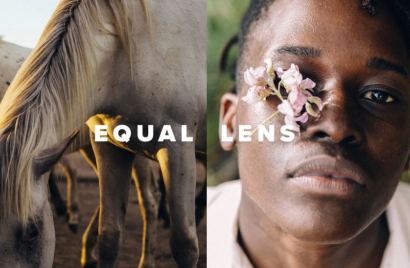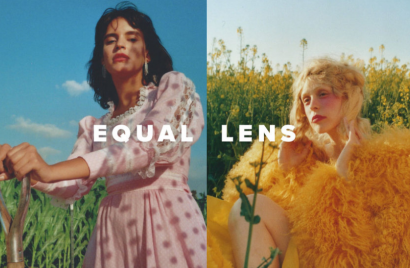
Virgin Media O2 launches summer online safety campaign
Virgin Media O2 and Internet Matters spotlight the importance of having conversations about online safety and starting them early

The briefest of analyses will quickly expose how very many miles remain on the journey to true equality. Helen Parker, Co-Founder of Another explores how to overcome institutionalised gender bias in 2020.

Anyone reading the pages of advertising’s trade titles could be forgiven for thinking we have made great strides in gender equality in 2019. The rhetoric around the issue has taken centre stage, with many a conference panel and column inch featuring successful female business leaders, suggesting they are now ten a penny. But the briefest of analyses will quickly expose how very many miles remain on the journey to true equality.
Recent statistics from the Geena Davis Institute of Gender in Media showed men make up 75% of characters in advertising and are 62% more likely to be depicted as smart. So far so predictable. But behind the camera it’s the same story, where women make up only 25% of commercially represented photographers, 7% of commercials directors and just 3% of executive creative directors.
Compare these figures to purchase decisions, 85% of which are made by women, and the story is even more unfathomable. To my mind never has there been a clearer business case for brands to give a more equal weighting to female involvement in the ad process.
And not just in front of the camera, where according to the ABX Advertising Benchmark Index ads with a positive portrayal of women have higher purchasing intentions, and improved brand reputation, but also behind the camera where so few female creatives have a voice.
As an industry there’s a clear movement towards change. Syl Saller, Diageo’s CMO, believes advertisers “have the power to normalise gender equality by what we choose to show in our ads, and who we choose to produce them” and has called for the industry to move quicker towards greater gender diversity.
Free the Work asks brands and agencies to always include a female in the triple bid creative commissioning process, giving women a better chance of winning the business. Many large organisations have signed up to this, and it is certainly improving the platform for female directors with many production companies now actively looking for females to represent and a greater proportion of films being made with female directors. But there is no reason why 100% of agencies should not get behind such a scheme.
Here at Another we have joined forces with adam&eveDDB’s Jaki Jo Hannan to create Equal Lens, a database of female photographers that enables all creative commissioners to quickly access female talent in every category.
Additionally, we’ve set up a Mentorship Scheme for female photography undergraduates, sponsored by Deliveroo and Simply Be. The scheme pairs graduates with award-winning photography mentors for a three-month period of work experience, the culmination being a social media campaign shot for the brand sponsor, overseen by the photography mentor.
Our aim is simply to ensure that females get the all-important industry experience and contacts required for a successful career in commercial photography. Our own research of university photography degree courses shows a 60:40 ratio of women to men within the courses, which rapidly becomes imbalanced in the workforce where women are outnumbered three to one.
However, it’s a slow journey towards gender parity in the creative industry. As commissioners of photography and film we see first-hand the shamefully low up take of female talent within the creative process. Recommending more female photographers and directors does not translate to female talent winning the bid. Agency creatives’ selection criteria is based largely on safety, working with people they know, from the director to the photographer or reputation, plumping for someone well known and technical expertise shown in a portfolio or reel.
Put simply, with female photographers and directors occupying the marginalised minority, the odds of them succeeding are stacked against them from the outset.
In his book Outliers: The Story of Success, Malcolm Gladwell sums this up perfectly when he says, “It is those who are successful…who are most likely to be given the kinds of special opportunities that lead to further success.”
Based on the current selection criteria, many females will not tick any of the boxes as they may not yet have experience, reputation or the portfolio/reel to be selected.
It is those who are successful…who are most likely to be given the kinds of special opportunities that lead to further success.
Malcolm Gladwell
I believe that by actively promoting female talent we can encourage their employment, and by understanding the obstacles women face we can help to overcome them.
At Another we actively encourage agency creatives to meet less well-known female photographers and directors rather than relying on treatments and portfolios as a means of understanding a photographer or director’s creative range.
There is also an argument for brands to play more of a part in ensuring that female directors and photographers are hired on a regular basis. Brands such as HP have mandated their creative agencies to appoint female directors, with hugely positive results.
Let 2020 be the year the industry as a whole pays more heed to the hugely talented pool of women out there and mark a real and permanent change in direction for the female creative industry.


Helen started her career in advertising before opening a stills production company in Cape Town, alongside her business partner, Tanja Adams. Her company, Another, has grown to become one of the leading buyers of commercial photography with an unparalleled knowledge of established and emerging photographic talent in the UK and beyond. Another, a Creative Production Company, continues to work with London’s top creative agencies and, increasingly, brands, looking to outsource and consolidate their creative production requirements. Her company is female-owned and managed and remains passionate about supporting and promoting female creative talent. To that end, Helen is instrumental in launching Another’s mentorship scheme for female photography undergraduates, with the aim of encouraging more women to enter and thrive in the photography profession.
Looks like you need to create a Creativebrief account to perform this action.
Create account Sign inLooks like you need to create a Creativebrief account to perform this action.
Create account Sign in